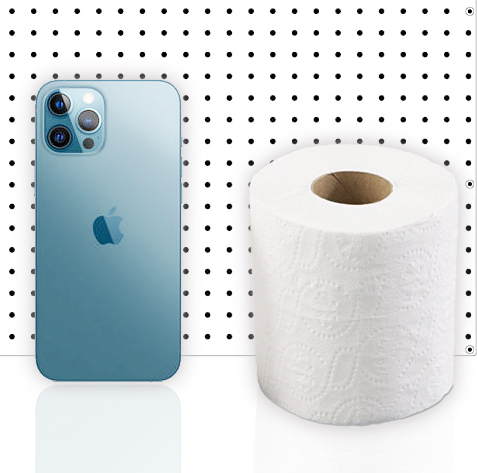 What do the new iPhone and toilet paper have to do with each
other? In this season, both are in high demand.
What do the new iPhone and toilet paper have to do with each
other? In this season, both are in high demand.
I was picking up a pizza to carryout at a restaurant the
other day. Next to the pizza shop is a phone store. I couldn’t help but notice
that outside the store was a long line of people waiting to get in. What were
they trying to buy? The new iPhone 12 Pro Max and the iPhone 12 Mini, just
released in time for Christmas. I thought, wait a minute, we are living through
a pandemic and everything in an actual store is supposed to be available for
pickup at the curb, not inside an actual store where everyone is passing germs
back and forth. Why are all these people standing in line like it is a "normal”
Christmas shopping season? The answer is demand created by marketing. You see, in
the middle of November, Apple released its latest version of the iPhone.
Information on it had been written about in tech blogs, ads had been running on
media outlets, so there was anticipation for the release.
When marketing is working correctly, the anticipation for
the release of a new product or service creates consumer demand, especially
when there is an upgrade to an already popular product, such as mobile phones.
But there is more to creating demand with your marketing than just teasing
consumers with a release date when the product is available for sale. Another
trick that is commonly used in marketing is the perceived scarcity of a product.
This is used many times very effectively during the Christmas shopping season.
If the word on the street is that only a limited amount of phones have been
released, people will do nearly anything to get one. The fear of scarcity was
the reason people were standing in a long line outside the phone store.
This leads me to my toilet paper comparison. Creating a
scarcity marketing demand is not exclusive to high tech items. Earlier this
year, toilet paper was in short supply. Supply chains were broken for a time
and many consumer products were not available. Consumers began to hoard
products for fear of running out, thus lines just like the one I encountered at
the phone store began to form outside of any retail establishment that sold
toilet paper. Within minutes of store openings, the entire inventory was
cleaned out. The fear of being without a necessity drove people to do anything
to get their hands on the product.
Marketing devices, such as limited time offers and exclusive
product offerings create a demand in the minds of consumers. Creating scarcity
with your marketing is highly effective to create a demand for your products
and services. Many times it is nothing more than rolling out a rumor that gets
people talking.
I had a conversation with a friend the other day. "Better
stock up on toilet paper,” he said, "because this spike in covid-19 cases is
creating a new shortage.” What did I do? I ran to the store and bought the
largest package of two-ply bathroom tissue I could find. He could have told me
there was a shortage of any product I use; it really didn’t matter what it was,
I believed what he told me. Was there a shortage when I got to the store? No,
but I bought it anyway. Why? Because he might be right and the next time I went
shopping the shelves could be vacant. It was the fear of scarcity at work in my
mind.
Be smart in how you use marketing to drive demand with your
customers. The more you plant the idea of missing out if they don’t move now,
the more you will create demand.